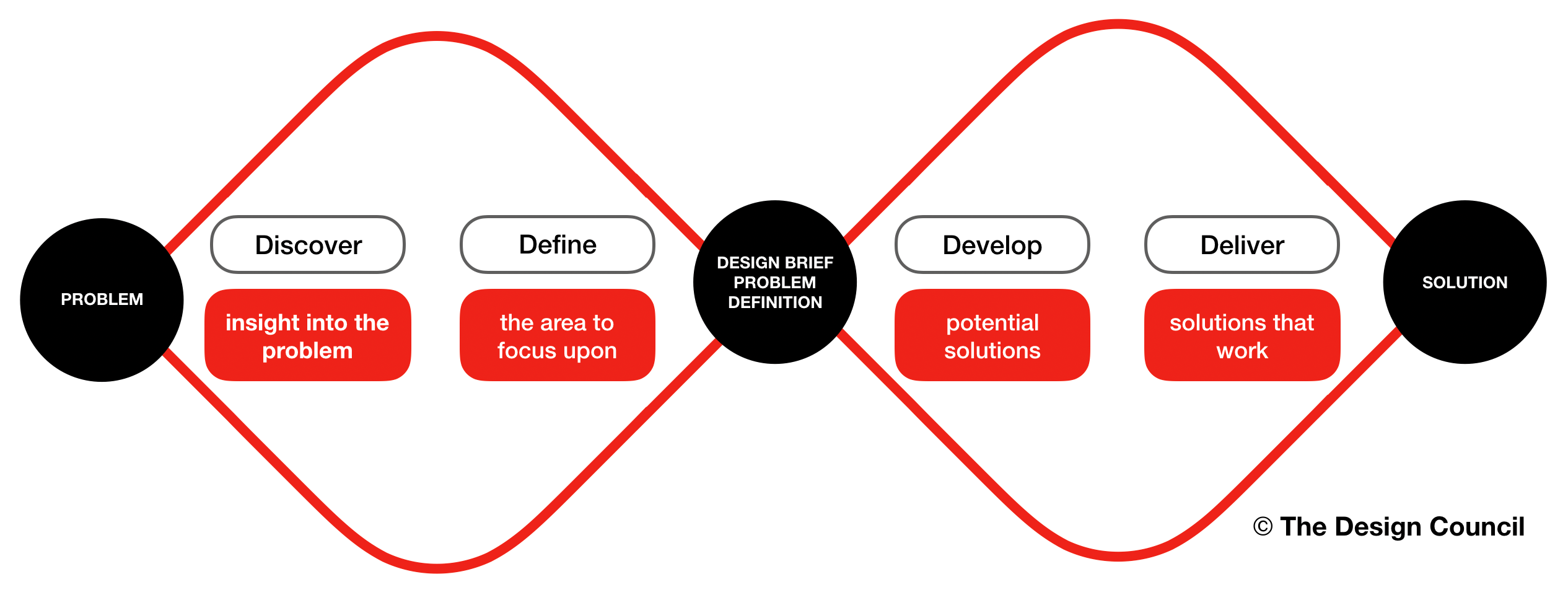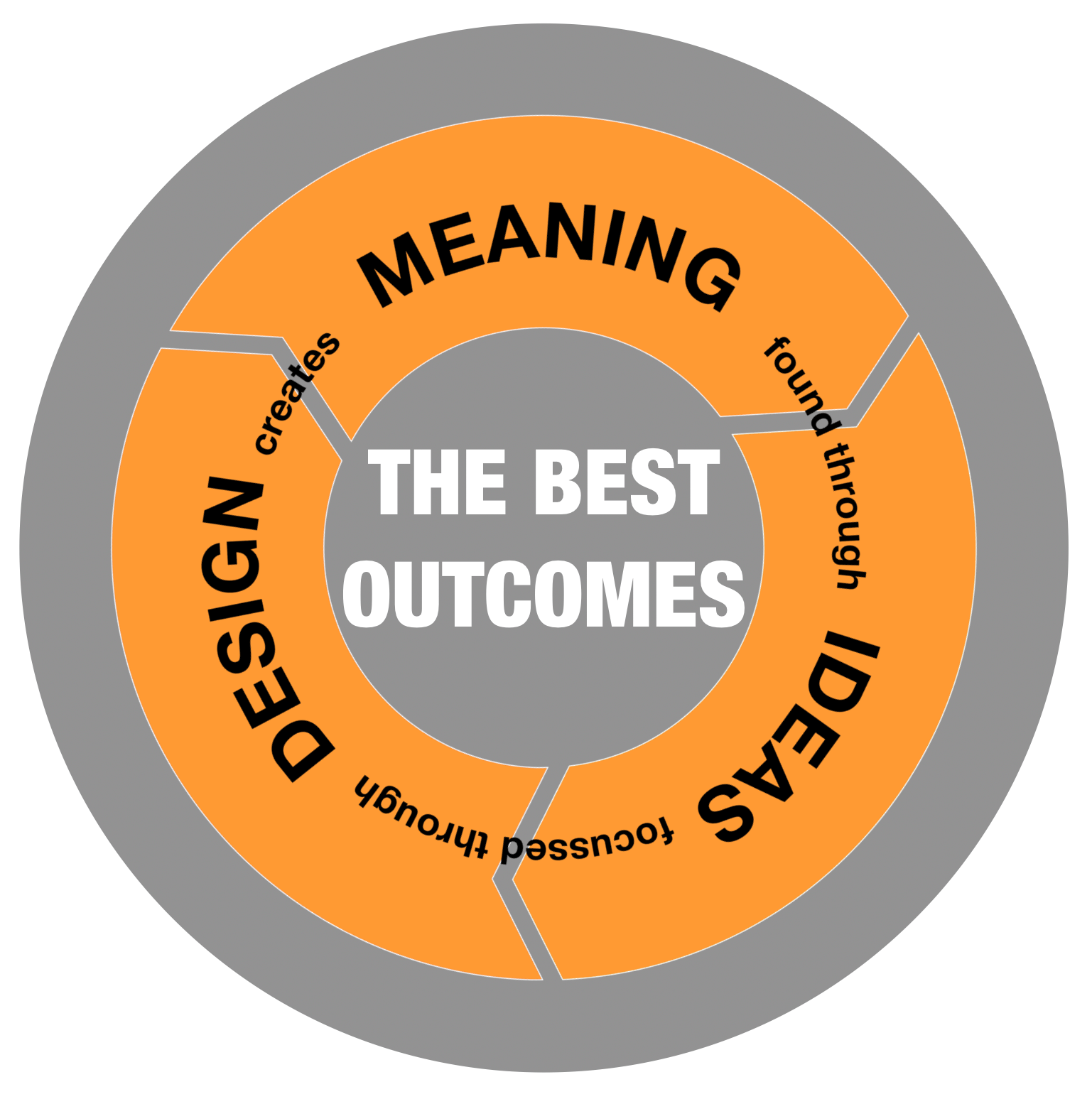3 Keys to Unlock Better Outcomes
Taking a new perspective on transformation can lead to major improvements in your outcomes.
By providing you with a view that allows you to check and challenge your current and future work.
“YOU NEVER CHANGE THINGS BY FIGHTING THE EXISTING REALITY. TO CHANGE SOMETHING, BUILD A NEW MODEL THAT MAKES THE EXISTING MODEL OBSOLETE.”
Dissatisfied with transformation outcomes? Fed up with lost opportunities? Often thinking, “if only..”?
I am.
I’ve been kicking around transformation for a while now. I’m into the realm of special birthdays and I don’t mean 18, 21 or even 40. Even before I was on the scene, people were bemoaning transformation outcomes and they still are.1
Of course we have looked to respond. We have built complex structures to work in, created many previously undreamed of job roles and conjured up a plethora of working methods and governance processes.
Yes, things have got better. But have they had the impact we crave? Could a different way of looking at transformation lead to a major improvement in outcomes?
Some of you may think that’s not our problem. We are state of the art, fully certified and ready to kick some transformation arse.
Are you really? Does your CEO think that?
Unlikely.
CEO’s have ambition. To survive and thrive. Perhaps they even want to be disruptors. They surely want to be innovators. They want these to sit at the heart of transformation programmes. 2
Lost Opportunities
“INSANITY: DOING THE SAME THING OVER AND OVER AGAIN AND EXPECTING DIFFERENT RESULTS”
Let us look at the crème-de-la-crème. The award winning blue-chip organisations. What can we observe?
We see our team pushing back on their Chief Operating Officer. They want a common technical platform and operating model following a restructure. No jumping to implement in this case. Investigation and a business case is the order of the day. Full marks?
No. A business case for what?
Could we get sexier? Leveraging data to fundamentally change the customer experience? Brilliantly manipulating a regulatory change to add value. Full marks and a bonus on top?
Nil points. What is the problem that really needs solving?
Let’s get visionary, create a new capability across our organisation that will fundamentally change the way it operates. Build the core capability and the rest will follow. Right?
Wrong. How will people use it?
Isolated examples? I think not. Time to stand back and look at the transformation challenge from a new perspective.
A Journey of Exploration
“SOMETIMES ITS THE JOURNEY THAT TEACHES US A LOT ABOUT THE DESTINATION”
For two years I’ve been exploring this question. How do we deliver better transformation outcomes?
Fortunately, I haven’t been traveling alone. Paul Fletcher has partnered me in this. Let me establish Paul’s credentials. He sat on the National Council of the Royal Institute of British Architects and was instrumental in redefining the delivery methodology used by clients, architects, engineers and builders across the world. Just to be clear that’s architects who work with structures and buildings, not enterprises and technology. He now advises and guides companies on their innovation projects; from smart materials to treating anaemia.
Innovation, built environment and transformation: all face the same challenge.
So how did this weird partnership come about? Paul and I go back to pre-school. To cut a long story short one wet windy and alcohol-free weekend we recognised we both faced the same challenge. It then took a while to work out what that challenge is.
The challenge of better outcomes.
We looked outward not inward. Reading and debating everything from disruption to day- dreaming, from insight to ideology. Have we understood it all.? not yet. Have we learned about better outcomes?
Yes.
We are still travelling. Grappling with concepts and understanding. However, we have identified 3 key themes that provide a new perspective and framework for driving better outcomes.
1. Meaning
“START WITH THE END IN MIND”
We all talk about outcomes. What is an outcome and more to the point what’s a good one?
Our tools to measure success are blunt. We use the language of tangible and intangible benefits. Which boils down to pounds and dollars. The realisation of which we struggle to measure.
Even if we do deliver and can measure the benefit, it isn’t the whole story. Just because we have a performance doesn’t mean the in-use experience is a good one. The benefit of the former is lost by the impact of the latter
We may drive short term returns. At a cost. There is no need for us to look far for examples. PPI in financial services and leasehold development in the built environment. Not to mention the myriad of innovative start-ups, that sink without trace.
Think it doesn’t apply to your digitisation of services? Check out disruption theory and think again. What’s the long-term opportunity cost of this investment?3
Your businesses future?
Taking a blank sheet of paper where might we start? How about the classic question “Why?”
No, not: “Why are we transforming?” but “Why are we doing the thing we are transforming?”
Enter stage right human-centred design. In this world people respond to the meaning they attach to something. If what you do or make has meaning to people, then you have something of real value.4
How do you know if someone attaches meaning to something?
Try the two-fold test. Does the outcome perform and in performing does it result in a good experience?
Think of your favourite phone App. It’s your favourite for a reason. Not only does it serve a purpose but it’s a joy to use.
Now take this thinking and apply it to your wider strategic transformation agenda.
If you can understand your desired outcomes in these terms, then you can identify the true value of your transformation. Allowing you to build your business case and delivery on solid foundations.
In 2001 Steve Jobs announced the iPod as “a thousand songs and it goes right in my pocket”. That had meaning.
It both defined performance and people understood the experience.5
Great but how can you realise these meaningful outcomes?
2. Ideas
“A COMMON LANGUAGE IS THE MOST OBVIOUS BINDING ELEMENT OF ANY SOCIETY”
Not so long ago I attended an international industry event, for a change discipline. One that for many years had the desire to become a profession. Well, I am pleased to say it’s made it.
How do I know?
From the number of people who explained why they were a different discipline or why someone of that discipline couldn’t do something.
Rubbish, it all depends on the individual. Let’s be honest. We complain about silos, but we have been great at creating them.
Growing ivory towers, that together claim to support the end to end transformation lifecycle. The chasms between them are huge and in many cases the bridges crossing them are rickety.
On what basis do I say this?
I have spent the day in a room with a multitude of practitioners and explored how the language we use connects and interacts. A lot of brown paper and post it notes later… we had a lovely diagram. Which was as useful as trying to charge an Android phone with an Apple lightning charger.
Without a common language how can we hope to work together to create meaningful outcomes?
We have ways of managing the delivery process, most commonly Prince and Agile. However, no coherent way to determine, shape and describe the content of change.
We lack a currency.
What about: capabilities, scope, objectives and requirements? At best they constrain the problem to be solved. More often they are used to drive a solution to an ill-considered and unexplored question. So, what might we use as our unconstrained currency?
Ideas.
Ideas transcend processes and cross disciplines. Ideas can be: a question to be asked, a possibility to investigate or a way of solving a problem. Ideas enable us to explore and discover meaning and then work through how to realises it. They can be both fantastical and proven.
Now you may feel we are entering the world of Harry Potter. But ideas are already important to organisations. One of the reasons IBM and Barclays are moving to campuses is to create the environment to encourage ideas.6 It is also why organisations invest in start-ups. They want their ideas and to profit from the new and meaningful outcomes they promise to create.
Let’s take the common mouse, the type that doesn’t eat cheese. Someone considered using a pointer on the screen. Someone thought that it could be moved by the hand (rather than a key board). Someone worked out that a rolling ball did the job well.
Get the picture? It’s many ideas coming together that created the mouse, an outcome that has meaning.
For the record. Xerox nailed the performance. Steve Jobs took that and made that experience enjoyable. Apple won the meaning game.7
Ideas are wonderful abstract unconstrained things. How can you bring order to them to enable transformation?
3. Design
“WE TAKE INVISIBLE IDEAS AND MAKE THEM TANGIBLE”
Good news, there is an existing, proven, model we can use to manage ideas within transformation. The Design Council’s, Design Model8. To be clear we are not talking design detail such as: technical design or user experience. We are talking design as the overarching framework for transformation
 There are four stages to the model: Discover, Define, Develop and Deliver. These are arranged in 2 diamonds. Put, simply the first diamond relates to the question to be answered, in other words understanding the desired outcome. The second diamond to answering the question, realising that outcome. An important feature of the model is the divergent aspects of Discover and Develop and the convergent nature of Define and Deliver. Divergent allows the exploration of possibilities, and convergent refining them down.
There are four stages to the model: Discover, Define, Develop and Deliver. These are arranged in 2 diamonds. Put, simply the first diamond relates to the question to be answered, in other words understanding the desired outcome. The second diamond to answering the question, realising that outcome. An important feature of the model is the divergent aspects of Discover and Develop and the convergent nature of Define and Deliver. Divergent allows the exploration of possibilities, and convergent refining them down.
We mustn’t forget, this is a model not a process.
On any transformation various aspects will be at different points in the model at any time. Progression is unlikely to be linear, it will require iteration within the model.
Looking at transformation using the Design Model has two key advantages. Firstly, it gives emphasis to the definition of outcomes. Making them meaningful. The second it provides the framework for ideas.
The stage of the model enables you to understand the nature of ideas you should be focussing on. In Discover any idea goes, “the art of the imaginable”. Define is weeding them down to a desired outcome. Develop is the exploration of ways to realise those ideas, “the art of the possible”. And finally, Delivery is the realisation of those ideas, creating the solution.
Some things suck… and nothing sucks like a Dyson. It started with an idea, a vacuum that would pick up the dirt. That defined the performance, the world’s most powerful vacuum. This in turn led to a solution, the cyclonic separator. The rest as they say, is history.9
So how do meaning, ideas and design come together?
Meaning, Ideas and Design; a Framework
“TRUE EXCELLENCE IS A PRODUCT OF SYNERGY”
Meaning, Ideas and Design all stand alone. However, the sum is more than the parts.
Meaning is found through Ideas. Ideas are focused through Design. Design creates Meaning.
 Application of the New Perspective
Application of the New Perspective
“THE ONLY SOURCE OF KNOWLEDGE IS EXPERIENCE”
Let’s revisit our 3 examples against this framework.
Remember the business case for the CEO?
Our business case had no meaningful outcome to focus on. It is looking at potential solutions and the value of them, without having defined the problem. In our terms it skipped the first Design Double Diamond, going straight to Develop.
What about our sexy data project?
Again, we leap to solution. In this case trying to implement one, without even considering the options. Staring in the Deliver stage of the second Double Diamond.
Finally, our visionary organisational capability?
This one is more nuanced. In this case we find the Design Model being used at a high level. We have the desire for a meaningful outcome, we have worked through ideas to realise it, we even have aspects of the solution. What we forgot was the iterative nature of the model. The need to move through it again at a more detailed level so we could focus on the specifics.
The brush strokes were too broad to paint a picture that people could really relate to. Thus, the meaning was lost and outcomes compromised.
Existing governance and methods in these mature, leading, organisation failed to recognise the fundamental problems with these transformations. By assessing the changes through the lens of Meaning, Ideas and Design we can clearly see the challenges these transformations face and act on them.
Skills
“NO ONE HAS AS MUCH LUCK AROUND THE GREENS AS ONE WHO PRACTICES A LOT”
The application of Meaning, Ideas and Design is not determined by your role. They are tools available to you.
Enabling you to look at transformation from a new perspective. To check and challenge its activity. After all, we are all the “conscience of the business”.
Using this perspective is not dependent on specific tools and techniques, it is based on how you think.
In applying and working in this framework we would advocate a Strengths10 based approach. Looking at your Strengths and playing to them.
The opportunities of leveraging Strengths such as: Futurist, Ideation, Individual and Input seem huge. These are needed to lead people in bringing forward the Ideas that through Design create Meaningful, valuable outcomes.
Experience to Date
“DO NOT GO WHERE THE PATH MAY LEAD, GO INSTEAD WHERE THERE IS NO PATH AND LEAVE A TRAIL”
Over the last two years we have tested this thinking across the built environment, innovation and organisational transformation. Early results are encouraging. People recognise the fundamental challenges to achieving truly valuable outcomes in each of these sectors.
The 3 building blocks: Meaning, Ideas and Design have engaged interest and generated beneficial discussion. They are being used to influence decisions and outcomes, within existing structures and politics.
Want to get your best project outcomes? Try this new perspective. You have little to lose and much to gain.
Let me know how you get on, both the good and the bad.
REFERENCES
1 Why projects fails was considered by the Harvard Business Review in 1982 http://www.som.cranfield.ac.uk/som/dinamic-content/executive/documents/WhyProjectsFailPMtodayMarch2014.pdf
2 PWC CEO Survey 2017 https://www.pwc.com/gx/en/ceo-survey/2017/pwc-ceo-20th-survey-report-2017.pdf
3 A brief introduction to disruption theory https://medium.com/@kalliagk/what-disruption-actually-is-and-what-it-is-not-9ad3602f6518
4 For a summary of the thinking laying at the heart of human centred design try https://www.tandfonline.com/doi/abs/10.1080/00140130701680668?journalCode=terg20
5 Steve Jobs launches the iPod https://m.youtube.com/watch?v=6SUJNspeux8
8 The reason for IBM’s move to campuses https://www.ere.net/innovation-is-now-the-1-business-driver-so-ibm-abruptly-drops-remote-work/
7 For an historical account of the development of the mouse http://history-computer.com/ModernComputer/Basis/mouse.html
8 Find out more about the Double Diamond and the Design Process https://www.designcouncil.org.uk/news-opinion/design-process-what-double-diamond
9 Put simply and in his own words https://www.dyson.com.au/community/about-james-dyson.aspx
10 Probably the easiest way to find your strengths is through “Strengths Finder 2” ISBN 159562015X. It can be done on-line and there are several similar free on-line offerings.

